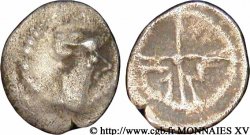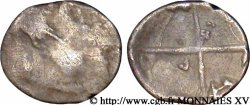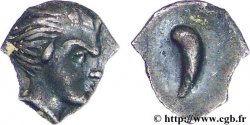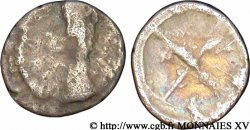- Accueil
- >
- >
v41_1532 - SALUVII Hémiobole à la tête de satyre et à la corne
MONNAIES 41 (2009)
Starting price : 250.00 €
Estimate : 450.00 €
unsold lot
Starting price : 250.00 €
Estimate : 450.00 €
unsold lot
Type : Hémiobole à la tête de satyre et à la corne
Date: après 49 avant J.-C.
Metal : silver
Diameter : 7,5 mm
Orientation dies : 6 h.
Weight : 0,27 g.
Rarity : R3
Coments on the condition:
Flan très court et irrégulier, avec un droit un peu confus, mais un très beau revers avec une frappe vigoureuse et une patine homogène
Obverse
Obverse legend : ANÉPIGRAPHE.
Obverse description : Tête masculine à droite.
Reverse
Reverse legend : ANÉPIGRAPHE.
Reverse description : Une sorte du virgule.
Commentary
Cette rare obole manque à tous les musées consultés. Cet exemplaire est très proche du n° 96 de MONNAIES II. Le n° 539 vendu dans MONNAIES XXVI l'a été à 366€ sur un ordre de 1001€ !.








 Report a mistake
Report a mistake Print the page
Print the page Share my selection
Share my selection Ask a question
Ask a question Consign / sell
Consign / sell
 Full data
Full data









